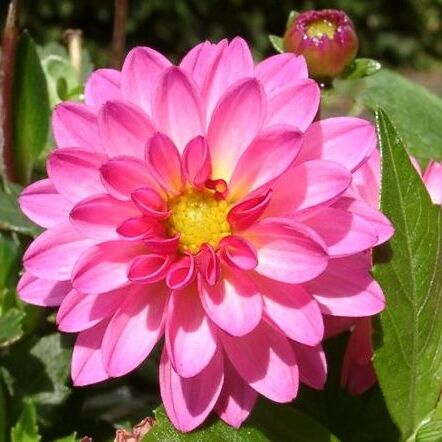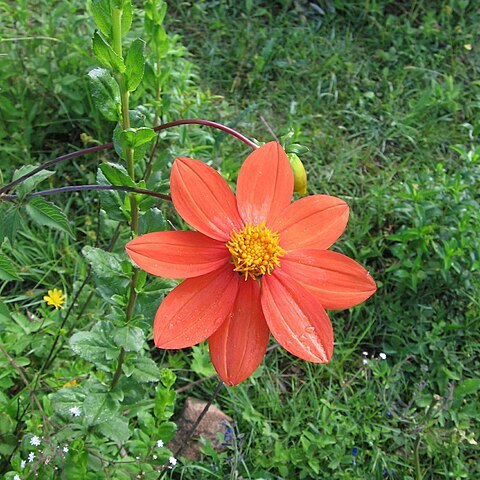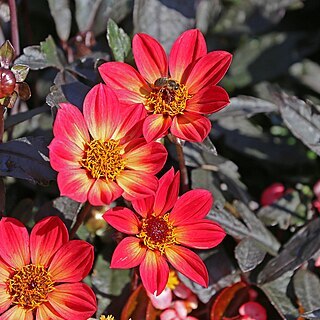Herbaceous perennials often woody toward base, or scrambling epiphytes. Lvs opposite or whorled, simple and entire or lobed, to 1-3-pinnate. Capitula pedunculate, solitary. Involucral bracts in 2 rows; outer row foliaceous; inner row membranous. Receptacle flat or nearly so; scales present. Outer florets ♀ or sterile, ligulate, white, pale lavender to deep purple, or yellow to orange to deep scarlet. Inner florets ☿, tubular (or replaced by ligulate florets in many cvs). Achenes all similar, linear-oblong or spathulate, compressed but not winged, often constricted below a disc at apex; pappus usually 0, sometimes of 2 rudimentary awns.
-note the names of these popular ornamentals are not authoritative – there are many cultivated Dahlia species and cultivars and much confusion in identification!



